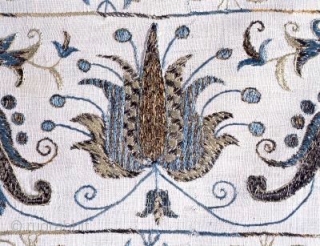Back
Lecture: Saturday, April 7, 2018, Los Angeles: “More Was Lost: The Ottoman Turkish Influence on Austro-Hungarian Textiles and Costumes" with Joyce Corbett, Independent Scholar and Curatorial Consultant, San Diego, California, and Budapest, Hungary. Hungarians have a saying, "More Was Lost at Mohàcs," referring to the site of the catastrophic battle in 1526 in which the army of Suleiman the Magnificent defeated the forces of the Kingdom of Hungary. Ottoman occupation of greater Hungary, which then included the region of Transylvania (today Romania), as well as Upper Hungary (today Slovakia,) lasted for approximately 150 years. As a result of this extended contact with Ottoman Turkey, Hungarians adopted many elements of this eastern culture. Not least among these was the Ottoman influence on the textile arts. This was manifested in a variety of material artifacts, among them equine goods, leatherwork used for outer garments and tent decoration, and embroidery and weaving in dress, decorative textiles and ecclesiastical linens. Silk and velvet woven goods imported from established trade routes in the east were highly valued in court dress and church vestments. Exotic woven carpets were acquired by important families and given as votive gifts to churches. The Turkish tulip represents a significant cultural heritage, and still remains the emblematic motif in Hungarian decorative arts. This talk will encompass both woven and embroidered textiles from Ottoman Turkish Europe, which were originally collected, preserved and treasured by 19th century collectors in museum and ecclesiastical collections in Hungary and Transylvania.
Joyce Corbett, Mfa, University of Washington, is a research scholar and curator specializing in the cultural history and folk art of Central Europe. Her areas of specialization are dress and textiles, and early 20th century modernist art. She currently conducts research in Hungary and Romania, and is working on a biography of the designer Eva Zeisel. Joyce also organizes and leads folk art and textile arts-oriented tours to Central Europe. Please bring examples of Austro-Hungarian textiles (which include textiles used in costumes) for show & tell.
Saturday, April 7, 2018, 10 a.m. Refreshments, 10:30 a.m. Program.
Nolte Hall, St. Andrew’s Lutheran Church, 11555 National Blvd. (@ Federal Ave.) Los Angeles, ca 90064
South of the 10 freeway, and west of the 405, near the intersection of the 10 & 405 freeways. Free parking.
Admission: Tma/Sc Members Gratis . . . . . Guests $10 For more details: www.tmasc.org
- Home
- Antique Rugs by Region
- Category
- Profiles
- Post Items Free
- Albums
- Benaki Museum of Islamic Art
- Budapest: Ottoman Carpets
- Gulbenkian Museum
- Islamic Carpets. Brooklyn
- Islamic Textiles. Brooklyn
- Konya Museum: Rugs
- MKG, Hamburg
- MMA: Caucasian Carpets
- MMA: Mamluk Carpets
- MMA: Mughal Indian Carpets
- MMA: Ottoman Carpets
- MMA: Safavid Persian Carpets
- MMA: Turkmen Rugs
- McCoy Jones Kilims
- Ottoman textiles. Met
- Philadelphia Museum
- Rugs and Carpets: Berlin
- Seljuqs at the Met
- TIEM, Istanbul: Carpets
- V&A: Classical Carpets
- Vakiflar Carpets: Istanbul
- Baluch Rugs: Indianapolis
- Gallery Exhibitions
- Jaf an Exhibition
- Alberto Levi Gallery
- Andean Textile
- Christie's London: 2016
- Francesca Galloway
- HALI at 40
- ICOC Washington, DC 2018
- Jajims of the Shahsavan
- London Islamic Week April, 2018
- Mongolian Felts
- Navajo Rugs: JB Moore
- Persian Piled Weavings
- SF Tribal & Textile Art Show 2020
- SF Tribal 2019
- Sotheby's: C. Alexander
- Turkish Prayer Rugs
- Turkmen Main Carpets ICOC 2007








